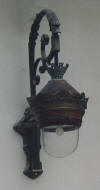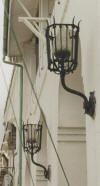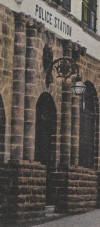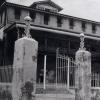Lights of Zanzibar.
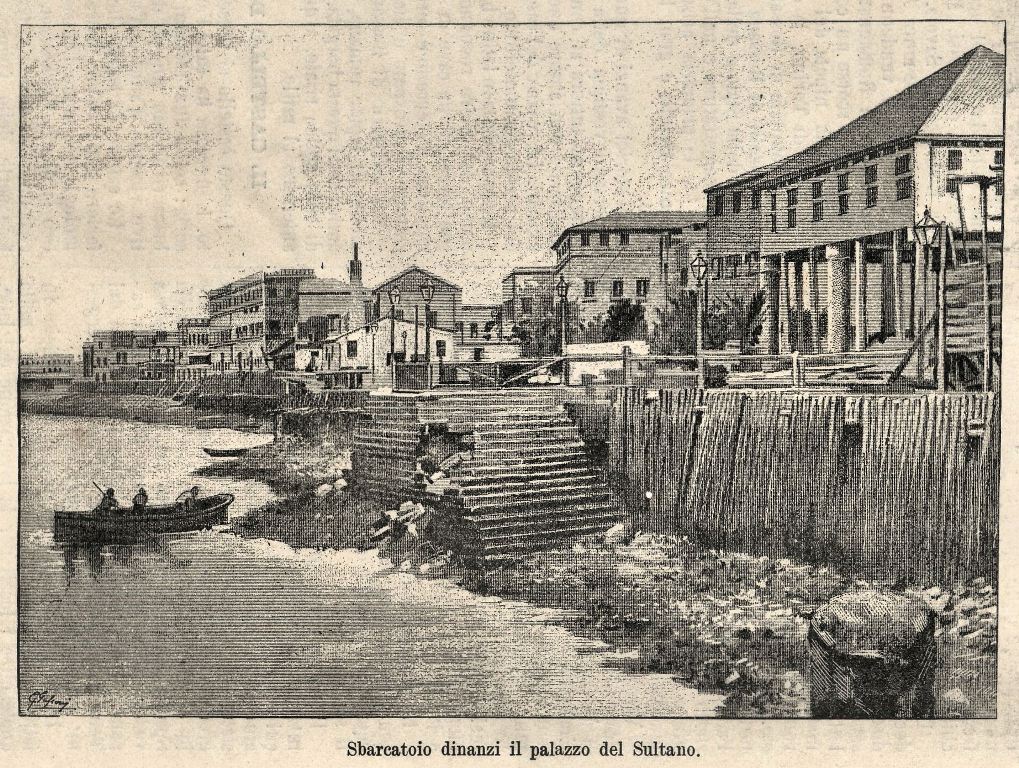
Imagine the effect electricity had on Zanzibar when it was first introduced.
"Darkest Africa" had always stood near to old Zanzibar, and dark it was. Beyond the coast were the dense tropical forests; with mists and rains and sheer vegetative mass that could blot out light even at mid-day. At night, past the firelight, an impenetrable darkness stretched as far as the eye couldnt see. Even from a high place the stars were much more noticeable than the weak lights of the scatted settlements.
Weak as they were however, contrasted with the harsh darkness of the bush, those lights advertised humanity and civilization like no other marker. That lesson was well learned by the people of Zanzibar. In early Africa light meant civilization.
Lighting therefore became important to the people of the islands, and lights were used symbolically, as markers of their own civilization.
Oil
lamps were widely used in houses and in most public buildings in old Zanzibar. By
 1870 Oil Street lights had been installed along the major streets in Stone Town.
These street lights ran out of town, past the harbor, south towards Mbweni.
1870 Oil Street lights had been installed along the major streets in Stone Town.
These street lights ran out of town, past the harbor, south towards Mbweni.

 Ten
years later imported electric lights became available in Zanzibar, they were
immediately embraced by the elite as the perfect symbol of modernity, wealth and
sophistication. The Sultan arranged for the first electrical power station to be
built near the harbor Palace complex. The station generated only a few hundred
kilowatts of power but the Sultan quickly put to them use
illuminating as many royal buildings as possible. The Lighthouse which stood in
front of his palace was soon festooned with so many decorative colored bulbs
that sailors from the west began referring to it as "the Sultans Christmas
tree."
Ten
years later imported electric lights became available in Zanzibar, they were
immediately embraced by the elite as the perfect symbol of modernity, wealth and
sophistication. The Sultan arranged for the first electrical power station to be
built near the harbor Palace complex. The station generated only a few hundred
kilowatts of power but the Sultan quickly put to them use
illuminating as many royal buildings as possible. The Lighthouse which stood in
front of his palace was soon festooned with so many decorative colored bulbs
that sailors from the west began referring to it as "the Sultans Christmas
tree."
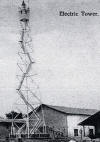 After
the war of 1896 the pace of electrification increased. The palace was restored
and dozens
After
the war of 1896 the pace of electrification increased. The palace was restored
and dozens
![]() of
new lights were added to the exterior. The old Light house had been destroyed in
the war but a new "electric tower" soon took it's place.
of
new lights were added to the exterior. The old Light house had been destroyed in
the war but a new "electric tower" soon took it's place.
In 1904 the Zanzibar Government signed a contract with the American firm, Arnold Cheney and Co. to build the famous Bububu Railway. Less well know is the fact that the Americans also undertook the task of installing electrical power lines along the track right of way. This was the beginning of the general electrification of the islands.
 Wherever
the rails went metal poles were installed and power lines strung overhead. By
1906, long before even London obtained them, Stone Town had electric street
lights.
Wherever
the rails went metal poles were installed and power lines strung overhead. By
1906, long before even London obtained them, Stone Town had electric street
lights.
Electric lights were then added to the entrances of many buildings. These early exterior lights featured large bulbs and huge glass domes; some still survive today.
Some we can only recall only thru pictures.
As the new century progressed more electrical capacity was added and Stone Town truly became a city of lights.
Today if one looks closely you can still find evidence of this early lighting exuberance scattered about the city.

References: Lights of Zanzibar by Khamis S. Khamis, in the magazine Recommended in Zanzibar 2001.
Images: by the author 2000-2006; and from Zanzibar Archives 1890-1940
Compiled and Written by Torrence Royer, 2006. For P.
All rights reserved.































